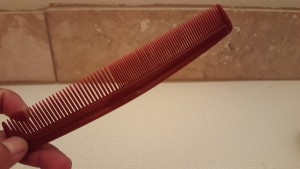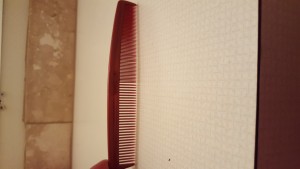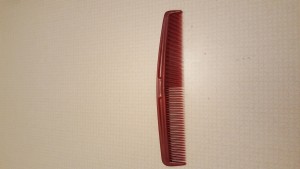Thanksgiving Interpretations
Step 1
The first reading was closest to my understanding of how Thanksgiving came about. I remembered more than I thought, although reading this article brought back a lot of memories from when I was first learning. I remember thinking how cool it was that the Wampanoag’s thought they were going there to fight but instead they marked history. I have not read a lot since I was little about thanksgiving and where it really came from so the first article about our history is really all I know to be honest. Although after all the readings this week I have gained much more knowledge about this holiday than I thought I would. One thing that interested me a lot was the fact that the Wampanoag’s don’t celebrate this holiday, its remembrance of blood shed because this gathering did not last long between them and the English in history. I have always thought of this day as just a feast day, and just a day that we stop and think of all the things we are thankful for. I never considered the history of this day, although im sure I will now that I have this knowledge. It makes me want to learn about the history of all our holidays actually
Step 2
I found these reading very interesting. I have always had a completely different image in my head about thanksgiving. I literally looked at it as a big day for thanks because it was a feast day in our history and we were thankful for the Indians, and it was as simple as that. Now that I have actually learned more about thanksgiving I realize it was much deeper than what I was taught as a child, which is why I found these readings so interesting. They were defiantly compelling, I actually had to laugh at myself for still believing what I was taught about thanksgiving as a kid. Obviously there is far more to the story than what someone is going to teach a bunch of young kids. One thing that really caught my attention was how it has evolved from when it was created to now. I also am curious how many people actually really know about thanksgiving. Richard J Maybury stood out to me the most out of the authors is responsible for The Great Thanksgiving Hoax he is famous for numerous political pieces. After reading up about this man it seems as though is extremely intelligent and knows what he is talking about. One thing I really liked about his writing was that he always seems to consider both sides. He is very passionate about politics and history. Even in his pictures I could tell that he was a very professional and well educated man. After reading about the authors, my perception did not change on how I viewed this topic. What it did was support my view. I had my new view of this topic after reading about it and it supported it even more when I read about the authors and realized that they are all actually really intelligent people and I believe they really know what they are talking about. Although I might not agree with everything that they say, they are very good authors with a lot of intelligence.
Step 3
Compared to the first steps reading I am liking these ones more and more. I liked these readings because I feel like they are real. They don’t beat around the bush, they want the readers to know the story and opinions. They want people to know the truth which I respect. For the past 15 years I have had the completely wrong image in my head because I honestly think that it was taught wrong. What was the point of teaching me that? It’s not the real story so why make me believe it for so long. Kate Zernike stood out a lot to me. She is a great women author. I noticed that a lot of her topics that she writes about are extremely controversial which I give her props for getting her voice out there along with men. She works for the New York Times which is a very rewarding title. She writes a lot about criminal justice which I found really interesting because that is my major. Just like the other authors, knowing more information about them does not change my outlook, it only adds credibility.
Step 4
Anyone who really wants to know about Thanksgiving would look through in depth research, simple as that. I wish that I would have done my own research instead of believing the story that I did for so long. If I would have looked more into the subject and found credible authors like in these readings I would have learned a lot more. Not only did I learn a lot more about this holiday but I also learned about many different views that are among people. There are different ways to look at this which I found interesting. If I were to do more research on this subject I would look for credible articles by good authors, peer reviewed material, supported books, etc. I would not go to Wikipedia and take that information to heart. I want to know my information is coming from credible places rather than most of your .com sites I would look for .org, .gov and so on. I really enjoyed this extensive reading, I learned so much in this short work week.
First Thanksgiving
While I vaguely remember the details the I learned about Thanksgiving as a child (it was somewhere between second and fourth grade), I do remember that I was taught that it was a positive experience between the Pilgrims and Native Americans. We were told that, upon arriving in Plymouth, the Pilgrims were ravished with disease and a lack of food until they were taught by the Native Americans how to hunt and grow crops. We were also taught about the treacherous journey that they were faced with when sailing from England to America. I remember celebrating the holiday with arts and crafts, such as covering our hands in finger paint and using the handprint to make colorful turkeys.
2.1 Prownian Analysis
Hey y’all! I decided to choose the comb from amongst the other items in my bathroom. Here is my Prownian analysis.
Description: The object is of a red color. There are fine teeth-like parts on the object. These “teeth” are evenly spaced and pointy at the ends. It is about 6 or 7 inches in length and is made out of some sort of plastic.
Deduction: It looks like the object is used by an individual, but many individuals may use it. The object can be used by men, women, or children. The object is located in the bathroom primarily. The object’s purpose is to fix or arrange messy hair into a more neatly manner. The person who uses this object cares about their appearance, which makes sense because the object can enhance the appearance.
Speculation: Anybody who uses this object probably cares about their appearance and what their hair looks like. The producer of this product chose to use plastic, does this mean that the producer doesn’t care about their impact on the environment? Does the consumer of this product make a good decision to buy a plastic, rather than a wooden, ceramic, etc. , version of this object? Is it cheaper or easier to mass produce this object with plastic, rather than a more decomposable material?
Open Web source:
Freinkel, Susan. “A Brief History of Plastic’s Conquest of the World.” Scientific American. May 29, 2011. http://www.scientificamerican.com/article/a-brief-history-of-plastic-world-conquest/.
Combs are one of the oldest tools and are/have been used by humans across many different cultures for detangling, decoration, and delousing of the hair. Amongst every other beauty/health and hygiene product, the comb has not changed very much other than the material used to make it.
Peer-Reviewed Source:
Kardash, O. V., and T. M. Ponomareva. 2012. “MEDIEVAL (9TH-13TH CENTURY) COMBS FROM NORTHWESTERN SIBERIA.” Archaeology, Ethnology & Anthropology Of Eurasia (Elsevier Science) 40, no. 2: 72-82. Academic Search Premier, EBSCOhost (accessed January 26, 2016).
Until the 13th Century, the native peoples of Northwestern Siberia used mostly unilateral combs made from bone or a single piece of wood. These medieval unilateral combs were not only used for hygiene but also as elements of “coiffure” and amulets.
I’m going to use the first web source to expand on the author’s method of understanding the object. The author looks at how the object came to be, how it was made as a hand tool, how people from the past would know exactly what to do with a present-day comb, and how it was not only used for hygiene, but also for decoration in the hair. The author talks about the shape, practicality, versatility, and other aspects of the comb, which compares to Prown’s methods in a way.


- « Previous Page
- 1
- …
- 69
- 70
- 71
- 72
- 73
- …
- 97
- Next Page »